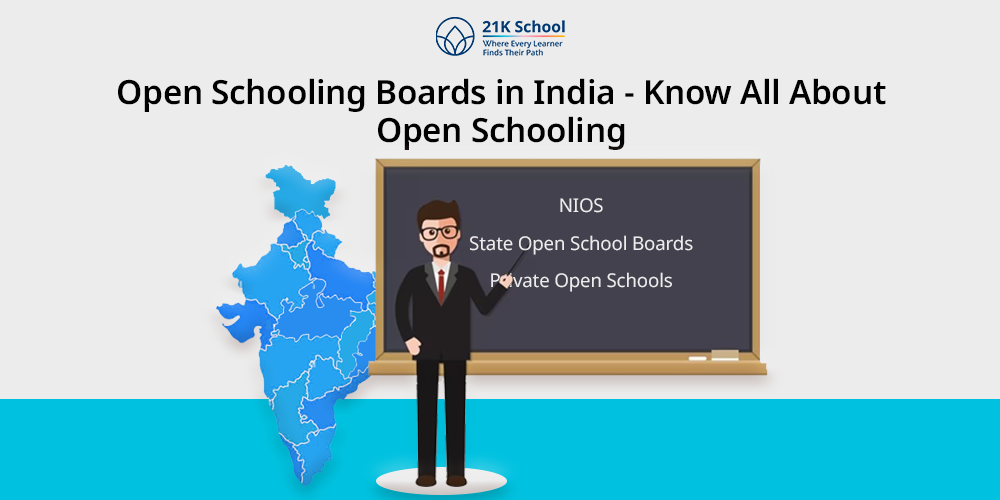
In a large populous country like India, the traditional school system is unable to accommodate diversified needs of learners. Rural children, earners, dropouts, or children with learning disabilities are likely failing to fit in the standard education system.
Here open schooling comes in as a comfortable and universalised option. Open schooling in India provides students with the privilege to study without the strict boundaries of a traditional schooling system.
And still have legitimacy and recognition in order to advance to higher learning and careers.
This article offers a detailed insight into open schooling in India; what it entails, its boardings, validity, and inner dynamics of the system.
Table of Contents
- What is Open Schooling in India?
- Structure of Open Schooling in India
- Dignified Open Schooling Boards in India
- Recognition and Validity of Open School Boards
- How Open Schooling Functions in India
- Open Schooling vs Regular Schooling
- Who Is Suitable for Open Schooling?
- Factors to Put into Consideration when Joining an Open School
- Advantages of Open Schooling in India
- Challenges of Open Schooling
- Future of Open Schooling in India
- To Conclude
What is Open Schooling in India?
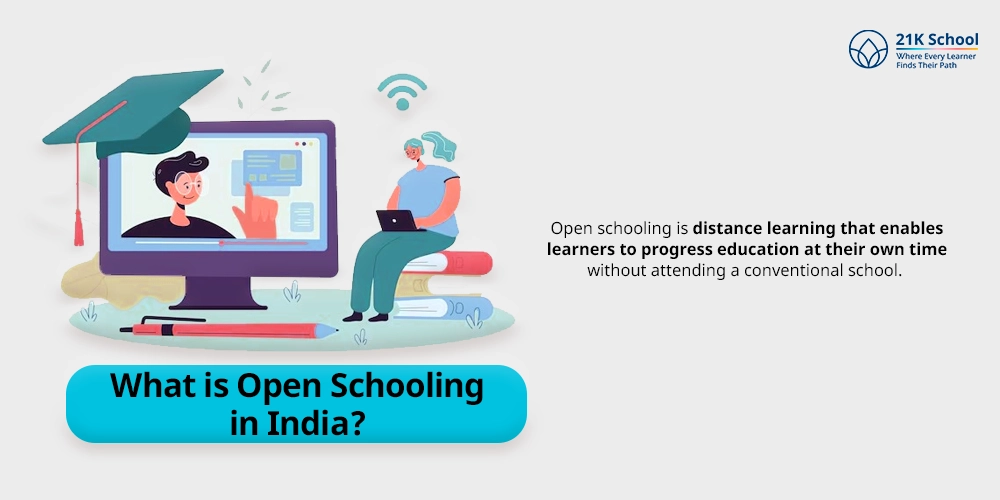
Open schooling is distance learning that enables learners to progress education at their own time without attending a conventional school. It is particularly suited for people who cannot get to regular schools because of financial, personal, or geographical issues.
Open schooling has a loose curriculum, so the learner exercises freedom in selecting subjects, examination times, and learning materials.
The prominent attributes of the open schooling in India are:
- Flexibility of entry and exit points
- No age-limits in admissions
- Liberation to select topics and testing times
- Printed and digital study material
- A valid certification as equivalent to regular boards
Structure of Open Schooling in India
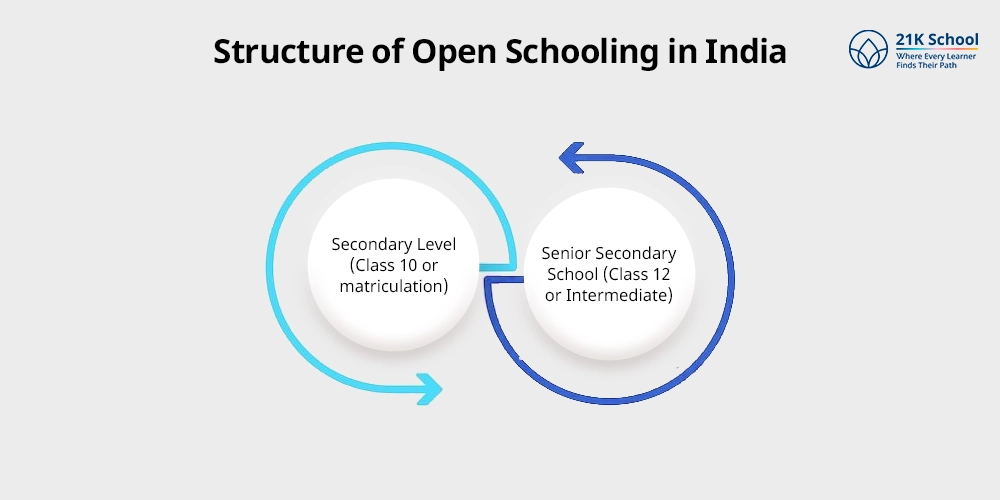
Open schooling system in India has the same structure as the traditional one in regard to stages of education:
- Secondary Level (Class 10 or matriculation)
- Senior Secondary School (Class 12 or Intermediate)
Students can sign up at any phase depending on the basic joining requirements including age and previous qualifications. Self-learning is emphasised here, and it is complemented by personal contact programs (PCPs), internet tutorials, and printed study guides.
Assessments are done semester-wise i.e. twice a year, generally in April and October, and in special circumstances on demand.
Dignified Open Schooling Boards in India
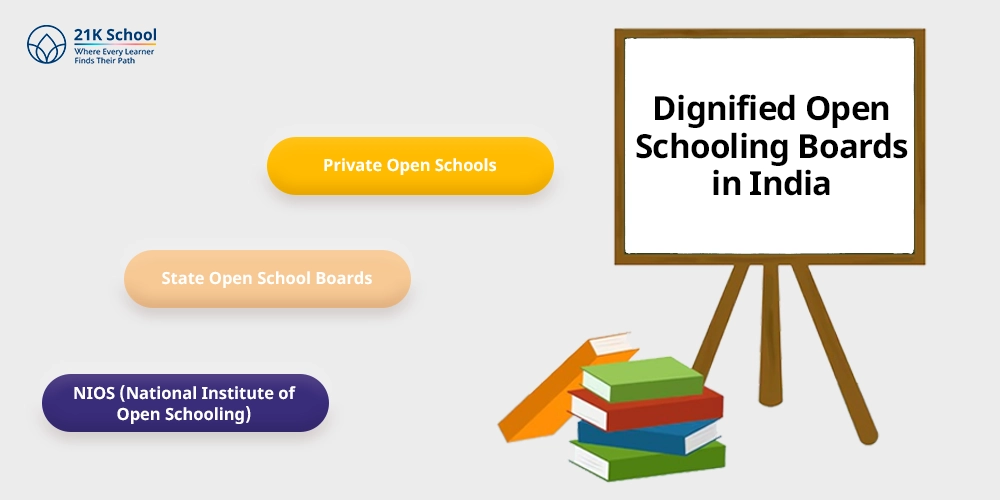
In India, open schooling is provided both by state-recognized and non-state institutions. So let’s talk about the most notable ones:
1. NIOS (National Institute of Open Schooling)
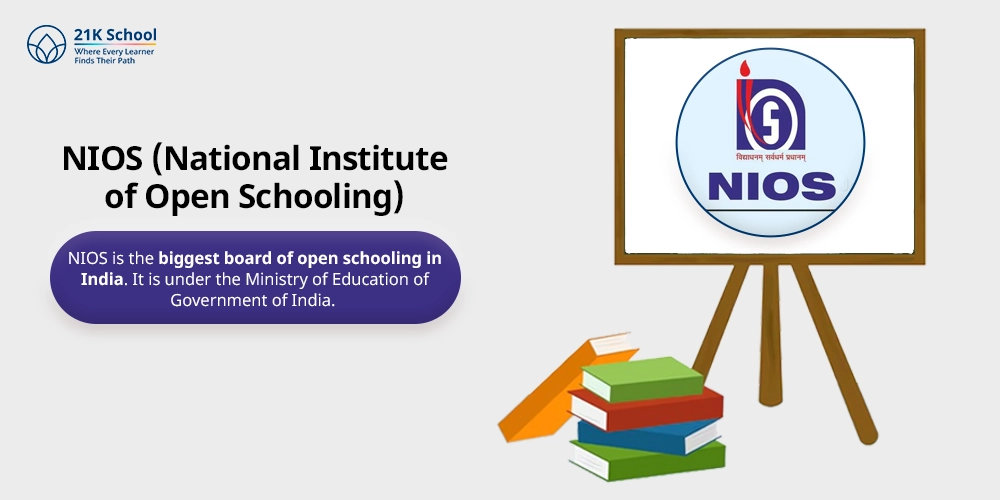
NIOS is the biggest board of open schooling in India. It is under the Ministry of Education of Government of India. Founded in 1989 it provides:
- Courses of secondary and Senior Secondary level
- Careers education and life enhancing schemes
- Open Basic Education (OBE) on early learners and adults
The best of NIOS:
- Accepted by all education and governmental institutions
- Biannual exams, on demand system
- Multilingual study material
- Digital education via mobile applications, Youtube, and SWAYAM platform
NIOS is a most preferred choice by students seeking nationally recognized open schooling options.
Get ahead with NIOS: Meaning, benefits, and more .
2. State Open School Boards
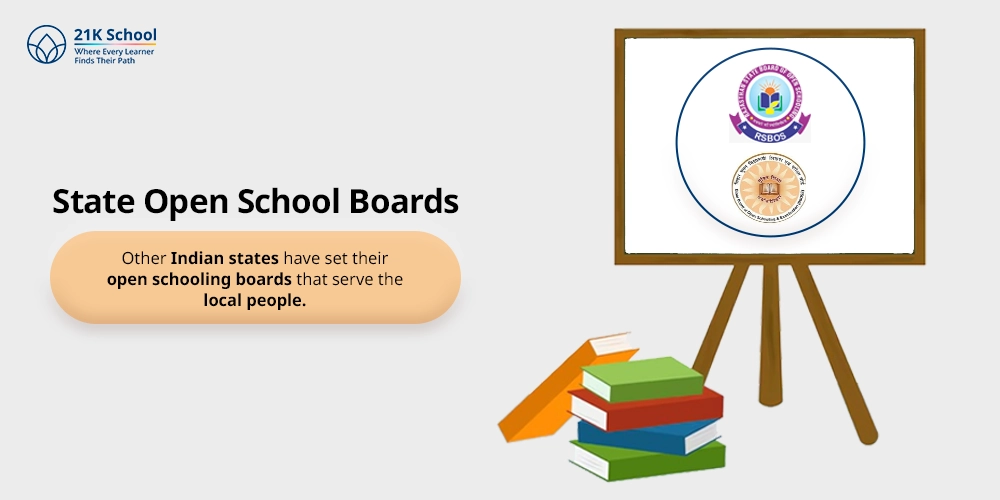
Other Indian states have set their open schooling boards that serve the local people. These boards are based on state curriculum and broadly provide secondary and senior secondary school education.
As some examples, we can give:
- Rajasthan State Open School (RSOS)
- Bihar Board of Open Schooling and Examination (BBOSE)
- Madhya Pradesh State open school (MPSOS)
- Haryana Open School (HOS)
Though these are state-centred boards, most of them are accepted by state universities and job selection organizations.
3. Private Open Schools
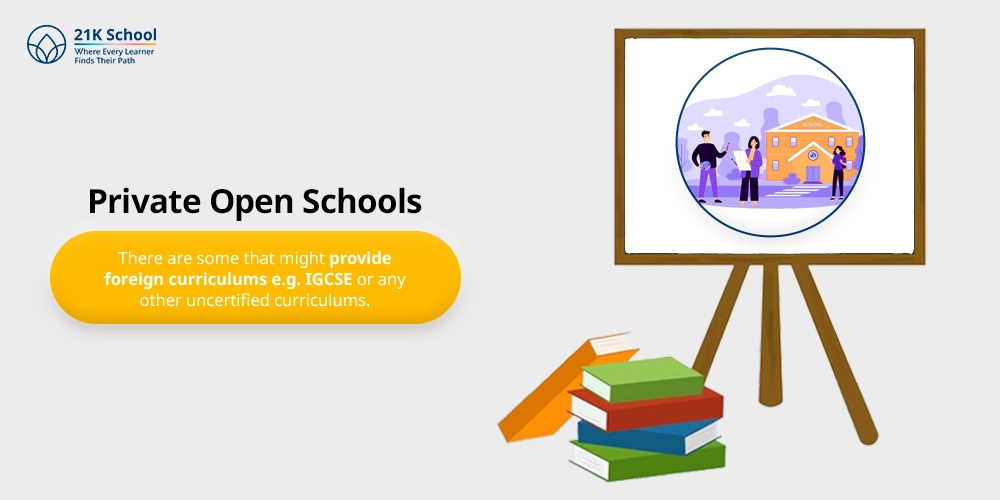
Findings also include institutions of open schooling that are non-governmental, however, the student should be careful with them. Not all of the private schools are accredited by such national institutions as UGC or AIU.
There are some that might provide foreign curriculums e.g. IGCSE or any other uncertified curriculums.
Remember that it is always important to find out the status of recognition of a private open school before you enroll at any school.
Recognition and Validity of Open School Boards
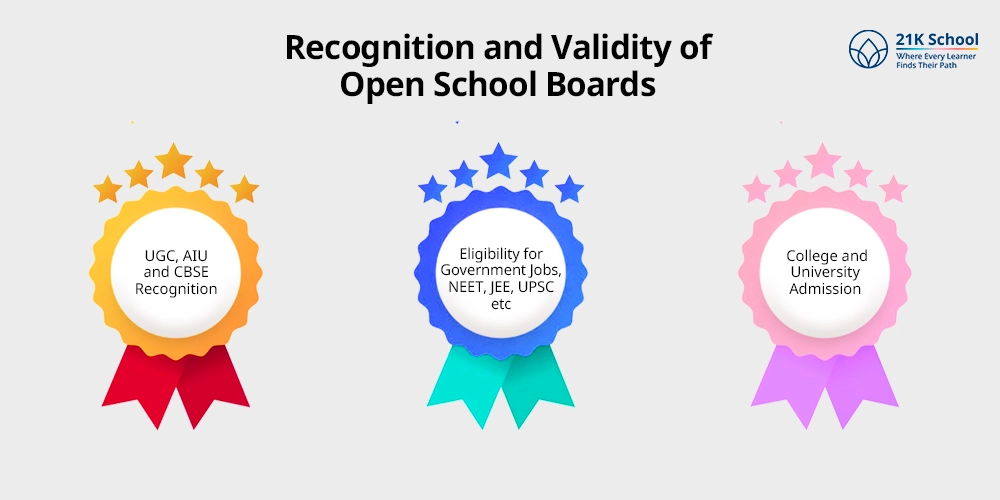
The major issue that students and parents may have is the validation of open school certificates in future education and employment.
And the breakdown is as follows:
1. UGC, AIU and CBSE Recognition
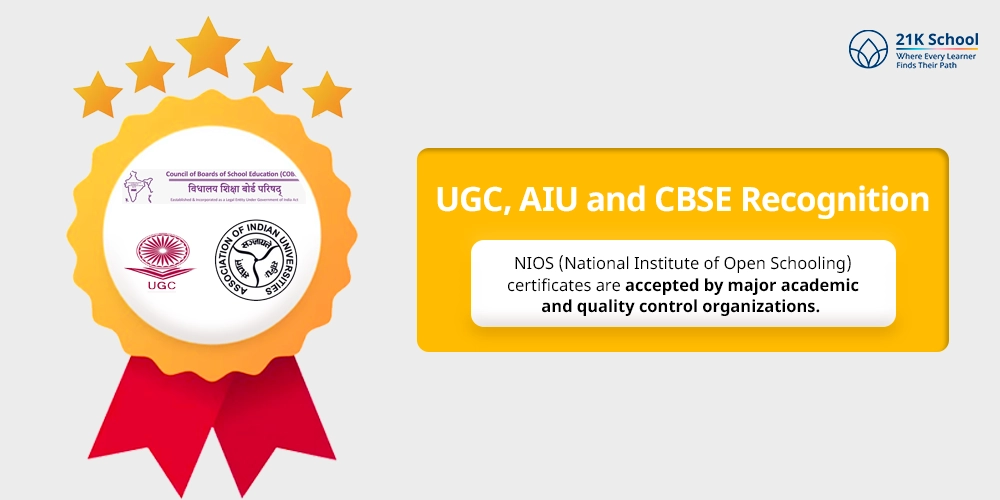
NIOS (National Institute of Open Schooling) certificates are accepted by major academic and quality control organizations. Such as the University Grants Commission (UGC), Association of Indian Universities (AIU) and Council of Boards of School Education (COBSE).
Most State Open Boards are state-recognized and recognized by many central systems. Although recognition can be different by state or board.
2. Eligibility for Government Jobs, NEET, JEE, UPSC etc
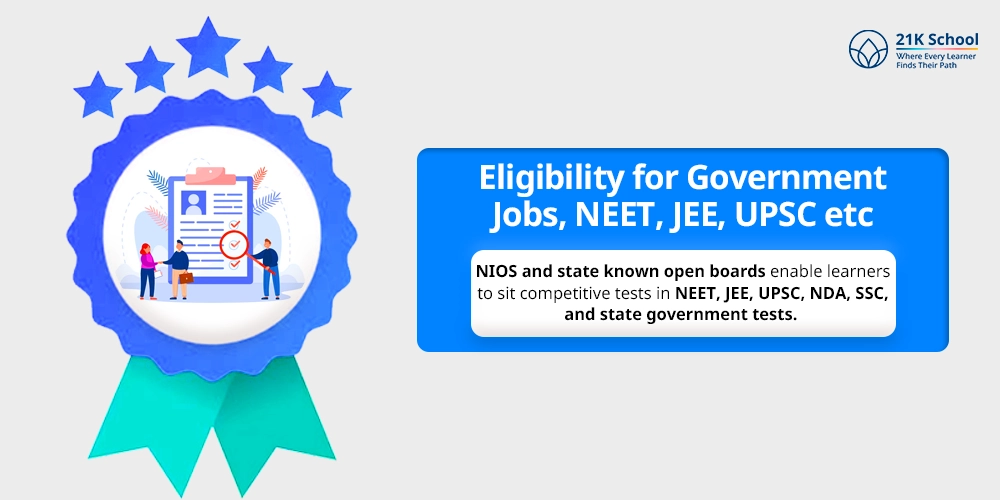
NIOS and state known open boards enable learners to sit competitive tests in NEET, JEE, UPSC, NDA, SSC, and state government tests. Another advantage is that students are able to avail themselves of jobs in government that are needed in Class 10 or 12.
They also have an opportunity to study in the program of ITI, polytechnal or professional diploma. Nonetheless, one should make sure that certain exams or employment bodies acknowledge certificates issued by smaller state or private boards.
3. College and University Admission
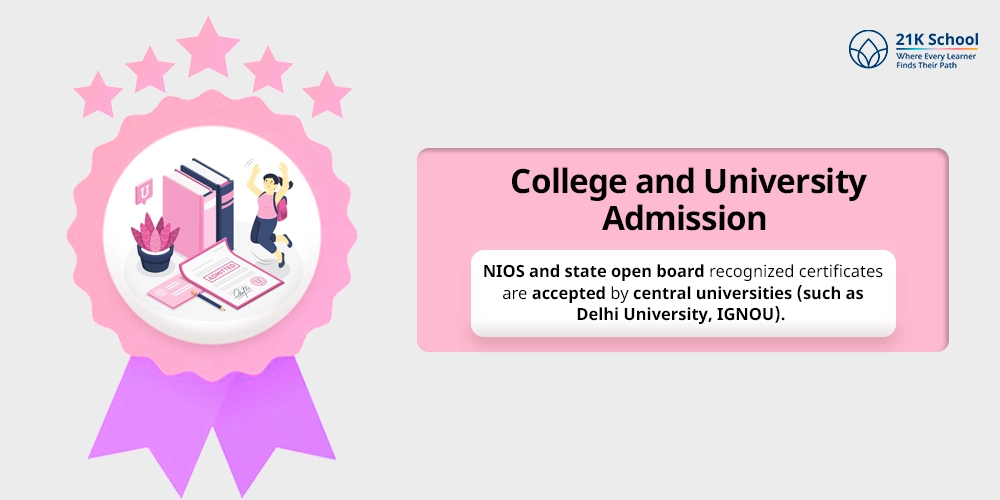
NIOS and state open board recognized certificates are accepted by central universities (such as Delhi University, IGNOU). State universities, and colleges, and private colleges and professional institutes (such as CA, CS, B.Ed., etc.) also accept such certifications.
Students are eligible for higher education courses even though specific admission requirements might differ, given that the board is recognized. The requirements to admission may vary but the eligibility normally continues as long as the board is recognized.
How Open Schooling Functions in India
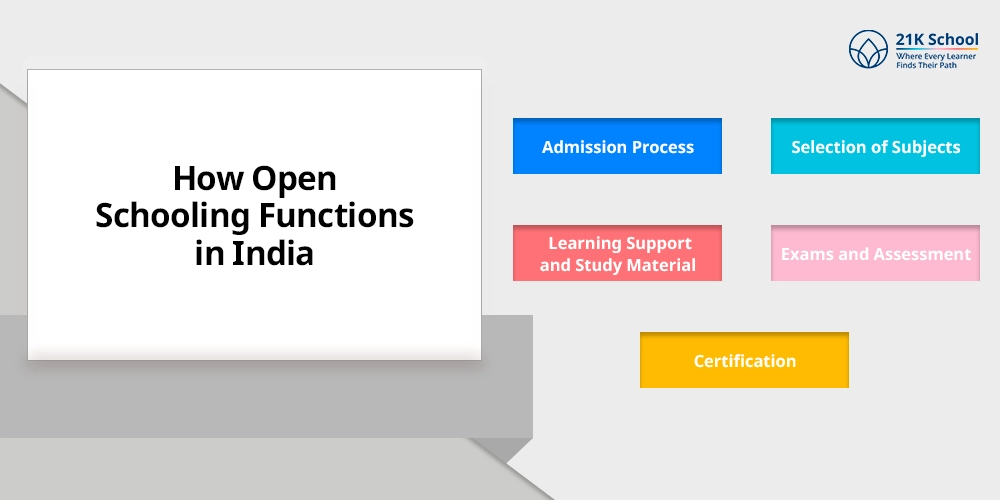
Learners and parents will be able to decide accordingly since they have an idea of how the system works. This is how open schooling usually looks like:
1. Admission Process
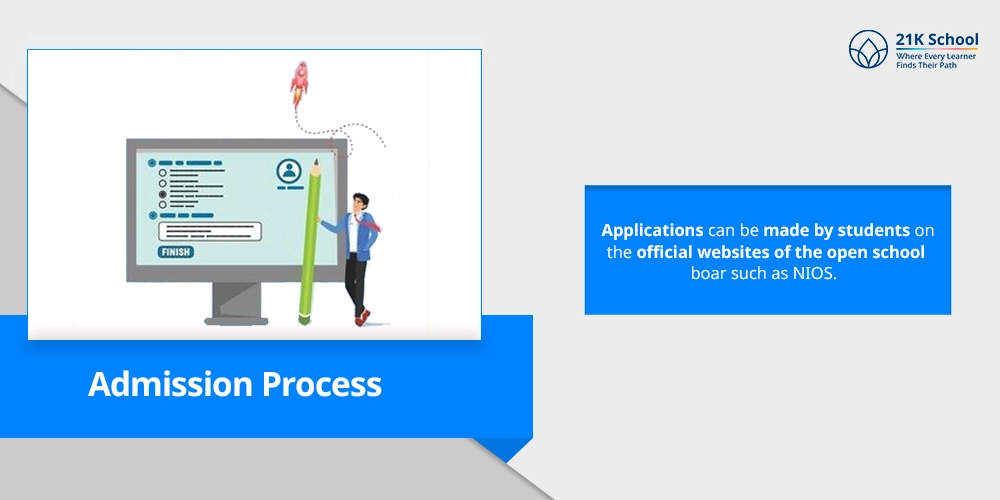
The process of admission in India open schooling is easy and online. Applications can be made by students on the official websites of the open school board such as NIOS.
Prerequisite documents include age proof, marksheets, ID proof and passport-size photographs. It is also convenient and learners do not have to undergo entrance exams to join the process.
Read more on how to take admission in NIOS for 12th class for greater clarity.
2. Selection of Subjects
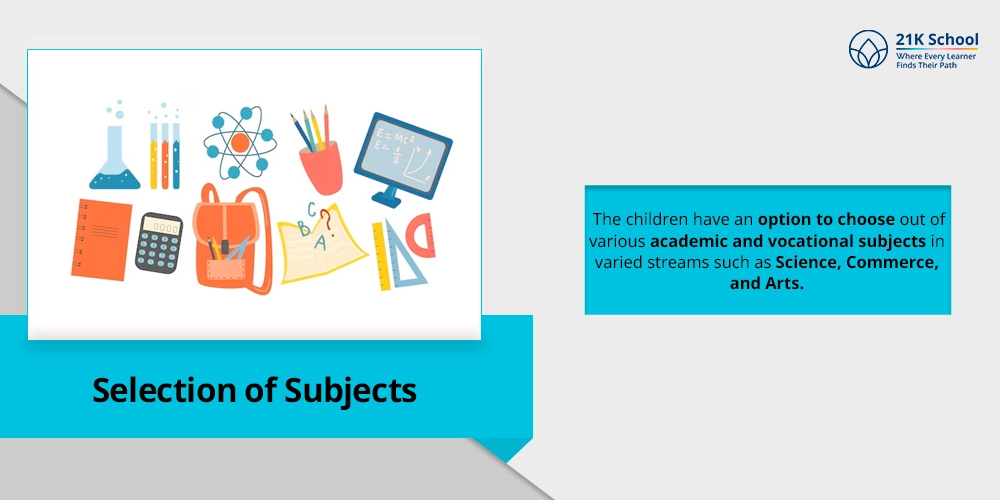
Choosing subjects is one of the greatest merits of open schooling. The children have an option to choose out of various academic and vocational subjects in varied streams such as Science, Commerce, and Arts.
In general, students select five subjects, two of which are languages, and three core subjects. But may modify their choice according to their interests and career plans. This versatility enables students to study with the view of their future paths.
3. Learning Support and Study Material
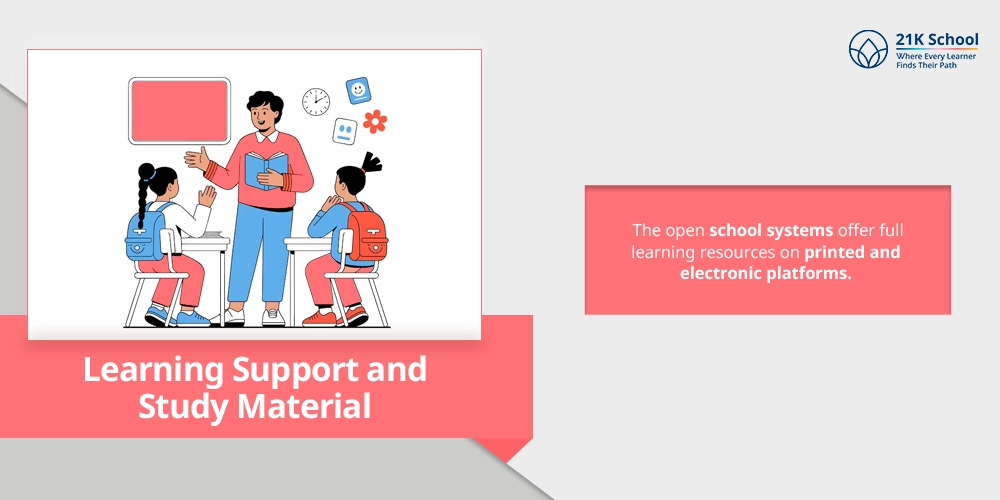
The open school systems offer full learning resources on printed and electronic platforms. Such resources enable the students to learn as fast as they want. To aid self-study, there are available online tutorials, voice-recorded lessons, and live sessions.
There are also Personal Contact Programs (PCPs) available at the particular study centers. This gives students a chance of learning and interacting with teachers in person.
4. Exams and Assessment
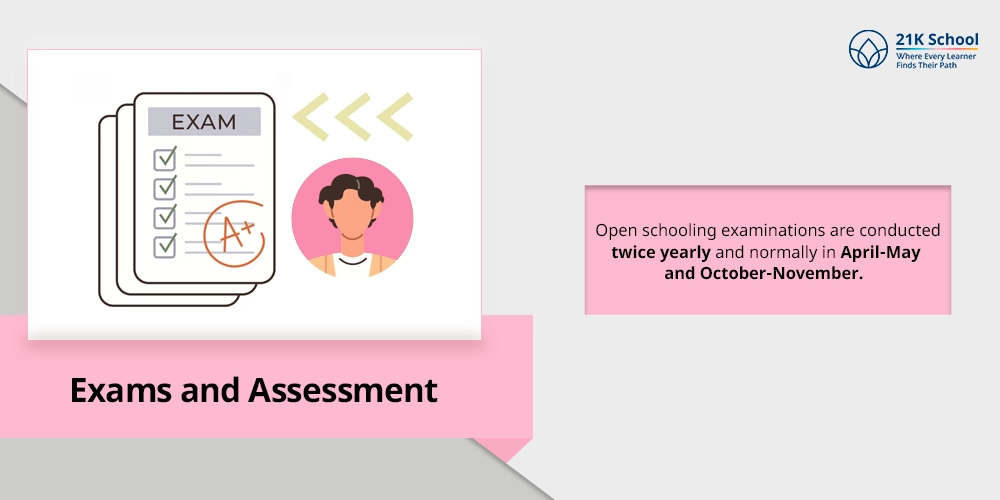
Open schooling examinations are conducted twice yearly and normally in April-May and October-November. Yet, in boards such as NIOS, the flexibility in on-demand tests have enabled students to sit at their own time.
Students also have internal assessments like projects and practical exams, in addition to final exams based on the subjects chosen.
These open schools also include formative assessment tools for conducting tests and exams.
5. Certification
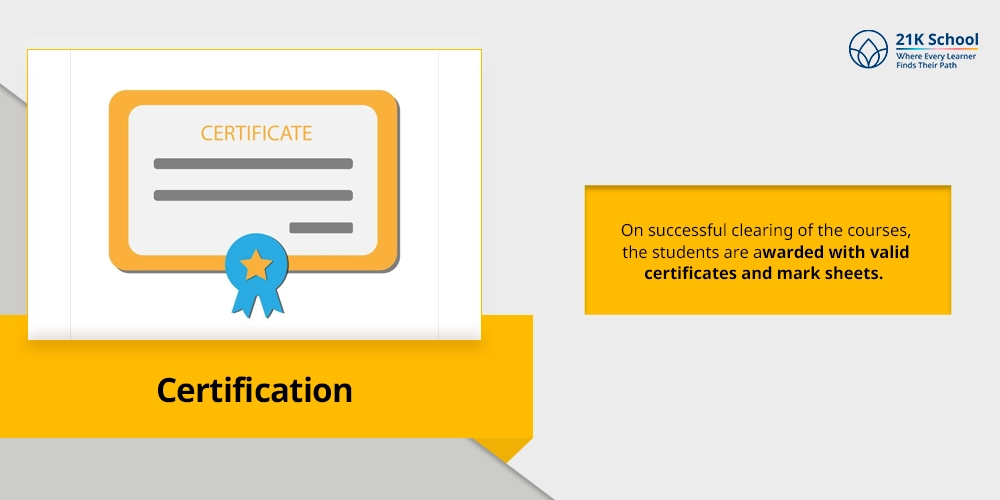
On successful clearing of the courses, the students are awarded with valid certificates and mark sheets. These certificates are accepted by schools and even other employers in India and other countries.
Thus similar to a certificate obtained through CBSE, ICSE and other regular boards. This guarantees that the students in open schooling be able to access educational institutions or other jobs at no disadvantage.
Open Schooling vs Regular Schooling
Although open and regular schools are intended to educate students, the process, organization, and learning experience are different. The below table and one-by-one classification helps you create a clear picture of the disparities.
| Aspects | Open Schooling | Regular Schooling |
| Form of Learning | Self-paced learning applying flexibility | Fixed schedule, curriculum. It is classroom-based |
| Attendance | Not mandatory | Mandatory 75% attendance |
| Curriculum | Subjects of interests and personal pace of learning | Prescribed curriculum, and uniform pace for all |
| Examinations | Two times in a year, and on-demand giving exams | Fixed, according to academic calendar |
| Mode of Learning | Distance-learning, self-study, and through PCPs | Teaching in-person with teachers and peers |
| Exams and job eligibility | Recognized mostly by all universities and government jobs | It is fully recognized |
| Best-suited for | Learning professionals, students from marginalized areas, and drop-outs | For students who perform best in structured environment |
1. Learning Structure
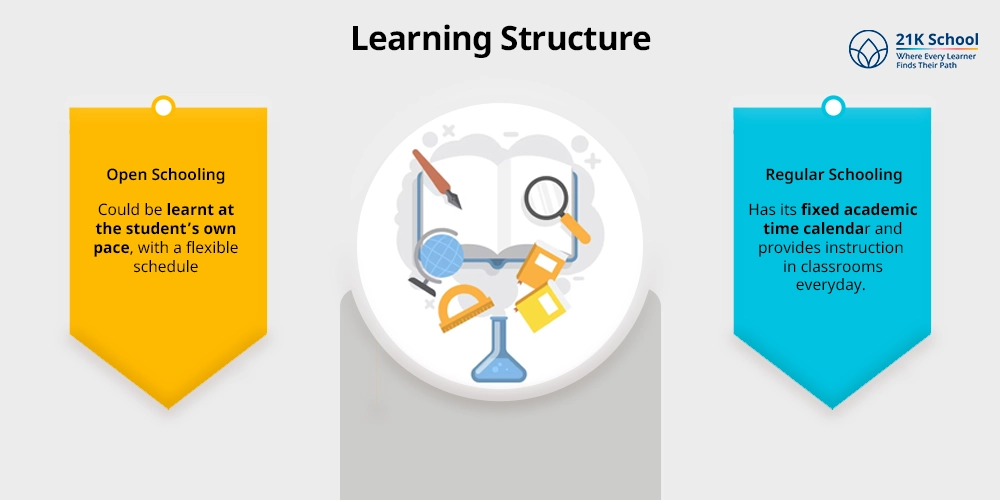
- Open Schooling: Could be learnt at the student’s own pace, with a flexible schedule, best suited to the student with other demands. There is no stipulated daily attendance in the classroom.
- Regular Schooling: Has its fixed academic time calendar and provides instruction in classrooms everyday. It is a mandatory participation.
2. Subject Choice and Curriculum
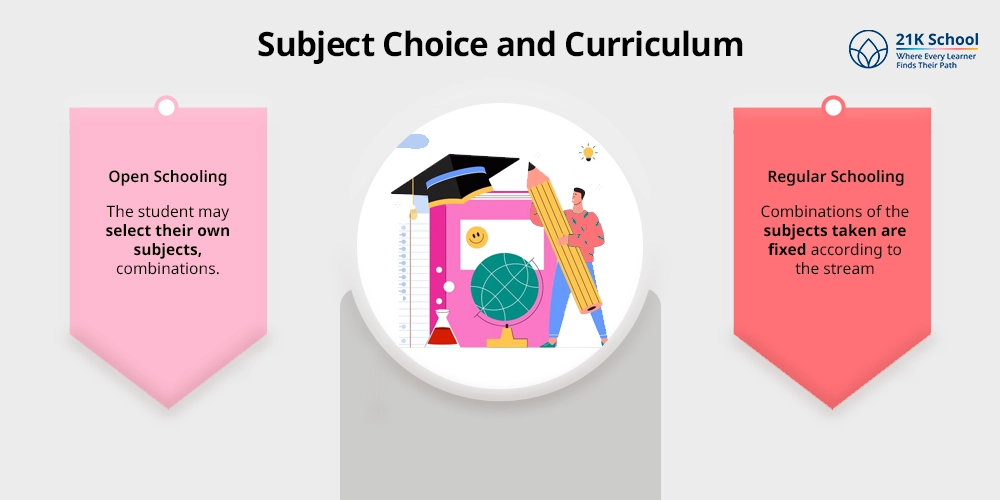
- Open Schooling: It offers flexibility to students: the student may select their own subjects, combinations, and vocational and life skill courses.
- Regular Schooling: Combinations of the subjects taken are fixed according to the stream (Science, Commerce, Arts), and the choice of subjects is very limited.
3. Examination System
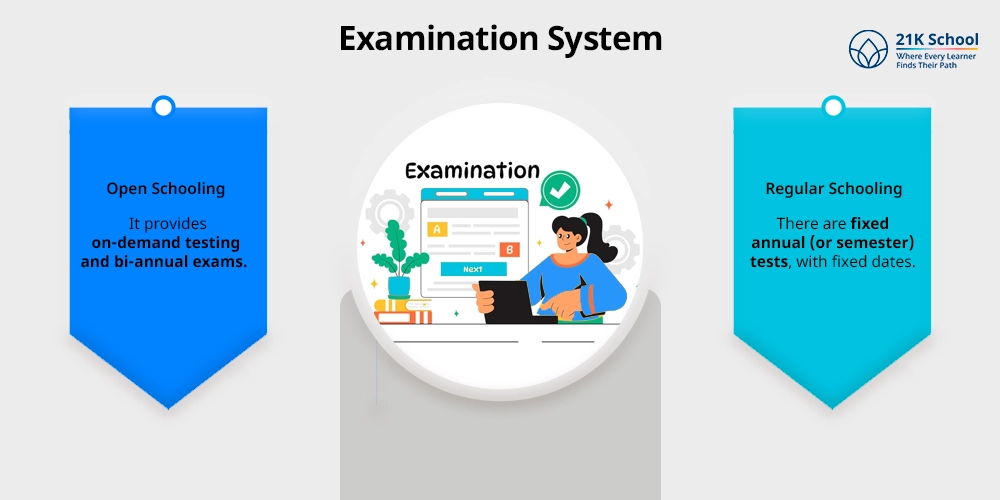
- Open Schooling: It provides on-demand testing and bi-annual exams which enable students to write examinations when they are ready.
- Regular Schooling: There are fixed annual (or semester) tests, with fixed dates set in advance of the students.
4. Student Eligibility
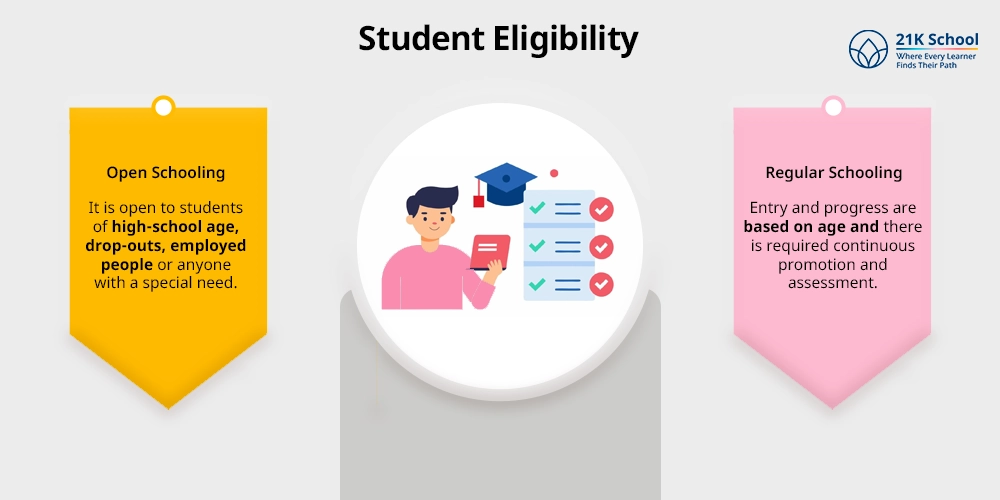
- Open Schooling: it is open to students of high-school age, drop-outs, employed people or anyone with a special need.
- Regular Schooling: entry and progress are based on age and there is required continuous promotion and assessment.
5. Learning Support
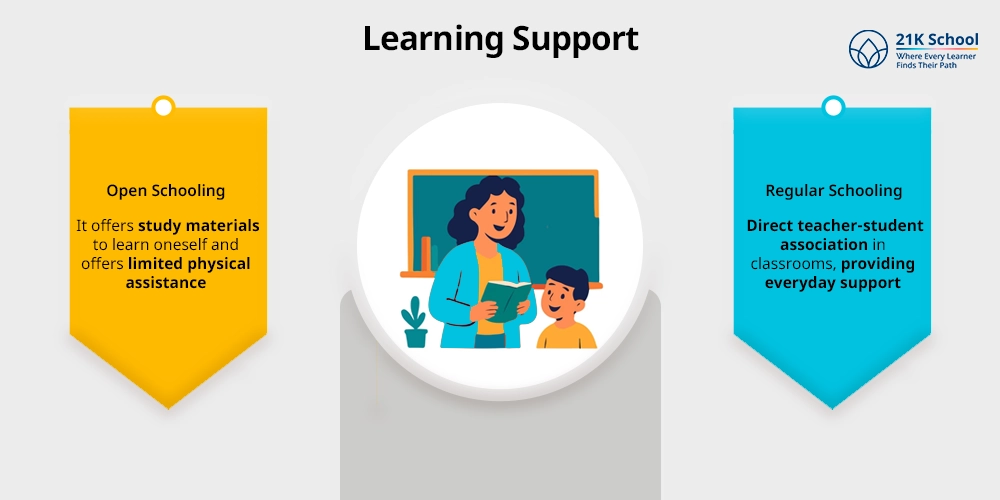
- Open Schooling: It offers study materials to learn oneself and offers limited physical assistance through Personal Contact Programs (PCPs).
- Regular Schooling: Direct teacher-student association in classrooms, providing everyday support and peer conversation.
6. Extracurriculars & Social Interaction
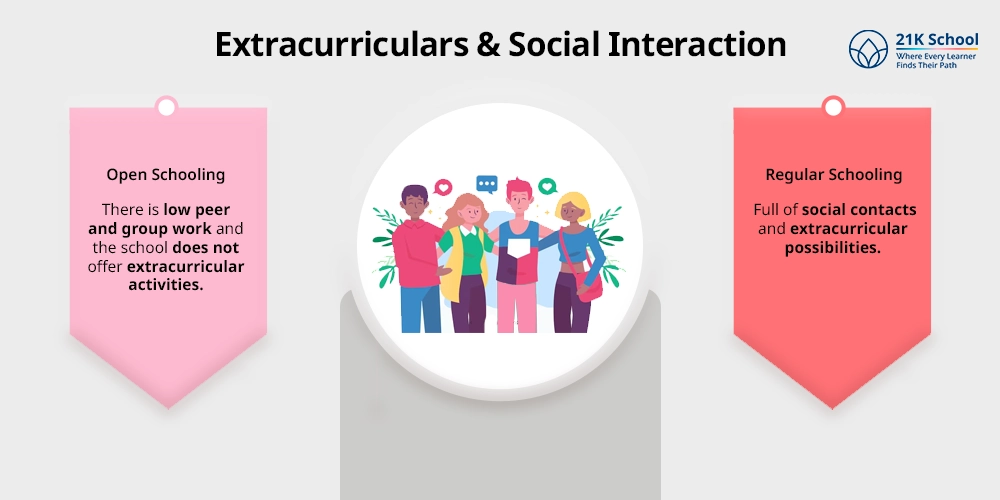
- Open Schooling: There is low peer and group work and the school does not offer extracurricular activities such as sports and clubs.
- Regular Schooling: Full of social contacts and extracurricular possibilities, encouraging the full development of individuals.
7. Validity & Recognition
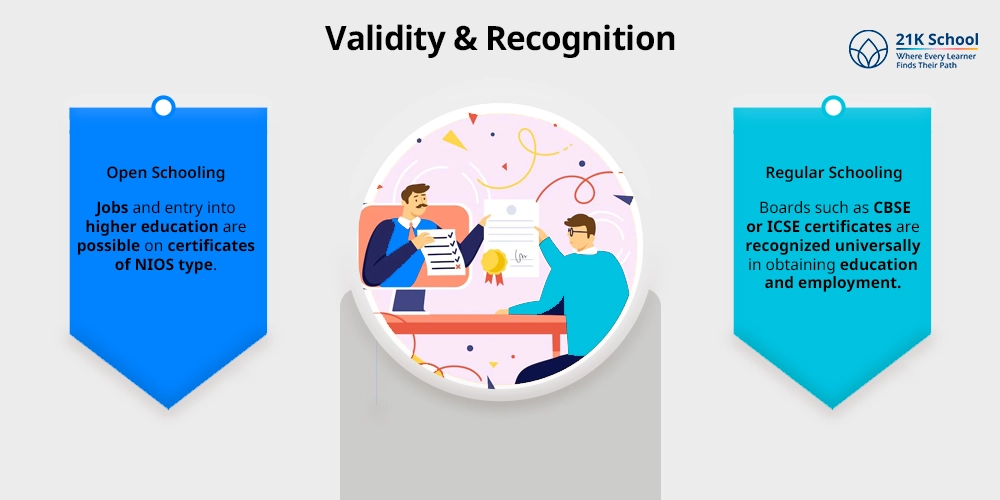
- Open Schooling: Jobs and entry into higher education are possible on certificates of NIOS type.
- Regular Schooling: Boards such as CBSE or ICSE certificates are recognized universally in obtaining education and employment.
8. Cost
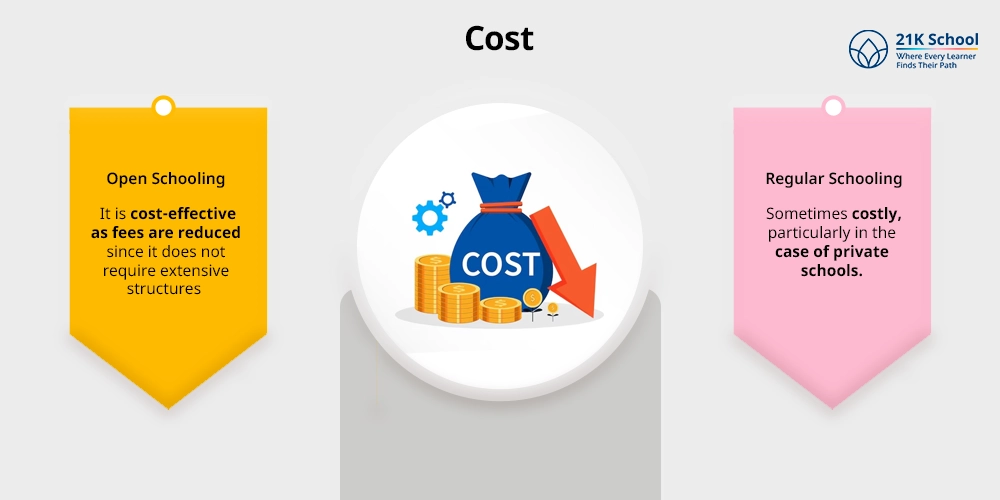
- Open Schooling: It is cost-effective as fees are reduced since it does not require extensive structures and facilities.
- Regular Schooling: Sometimes costly, particularly in the case of private schools as the cost of infrastructure and facility is high.
In short, children who thrive on structured curriculum and in direct teacher-student interaction, benefit best with regular schooling. Whereas those who experience limiting personal, professional or learning restrictive experiences are better served by open schooling.
Who Is Suitable for Open Schooling?
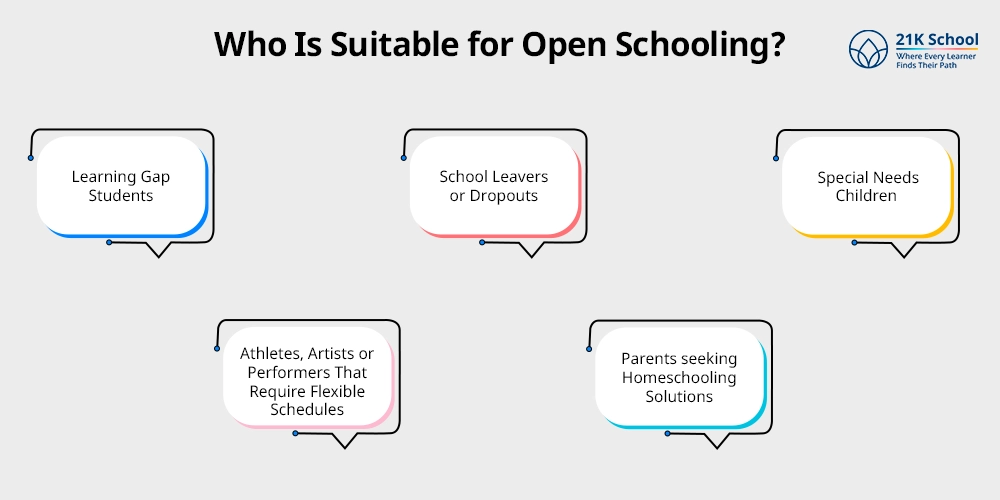
Open school is a very accommodating model, which is viable with many types of learners. The following are some groups that do well to benefit:
1. Learning Gap Students
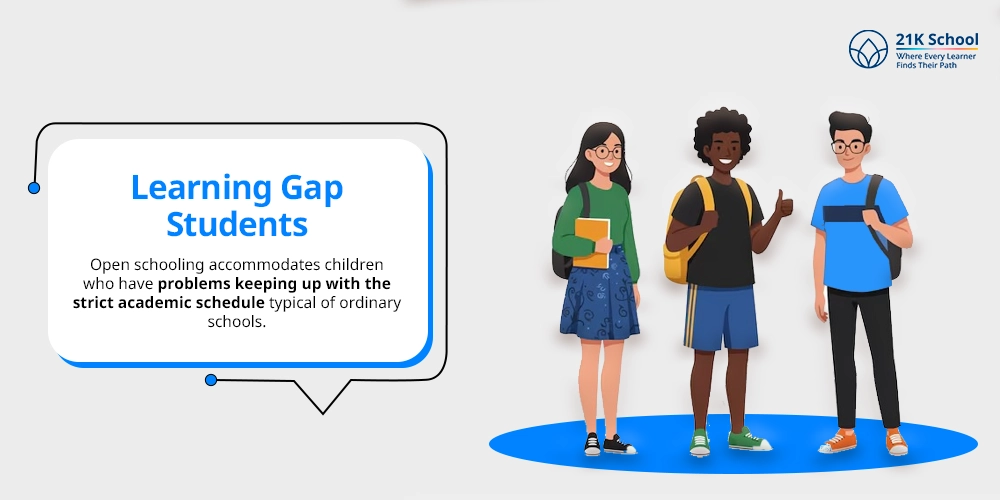
Open schooling accommodates children who have problems keeping up with the strict academic schedule typical of ordinary schools. It enables them to redo concepts and do exams at their own time.
2. School Leavers or Dropouts
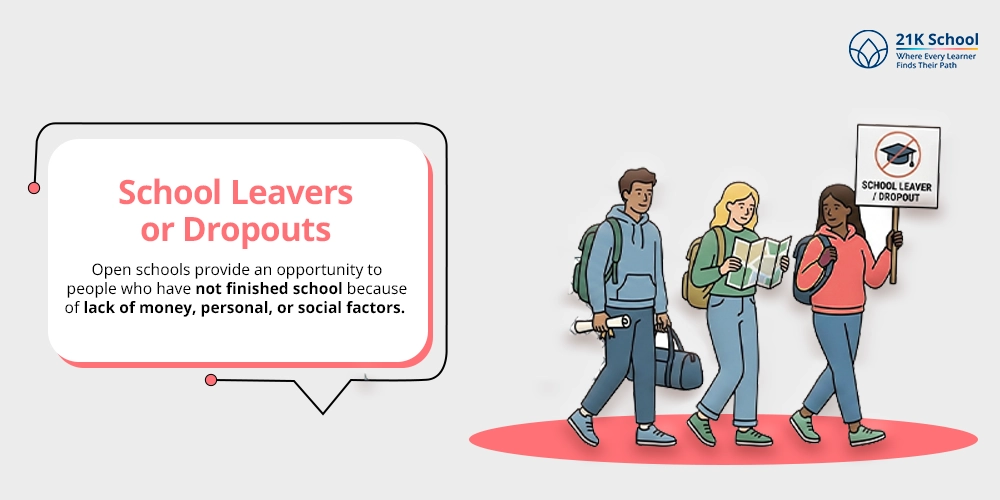
Open schools provide an opportunity to people who have not finished school because of lack of money, personal, or social factors. It allows them to get through their education without age limit and without the history of school attendance.
3. Special Needs Children
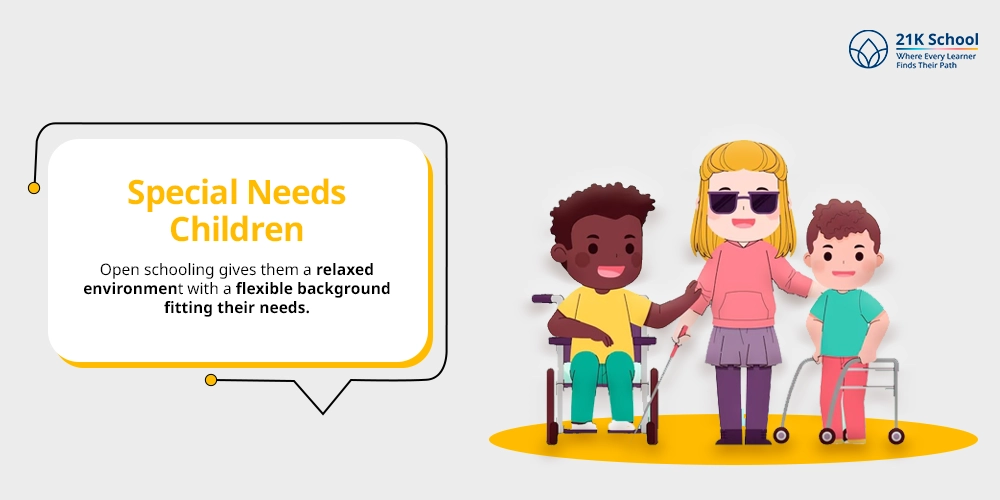
The physically or learning challenged students struggle to fit in the mainstream studies. Open schooling gives them a relaxed environment with a flexible background fitting their needs.
Online learning for special needs education has pushed limits of young minds limiting themselves due to lack of accessibility.
4. Athletes, Artists or Performers That Require Flexible Schedules
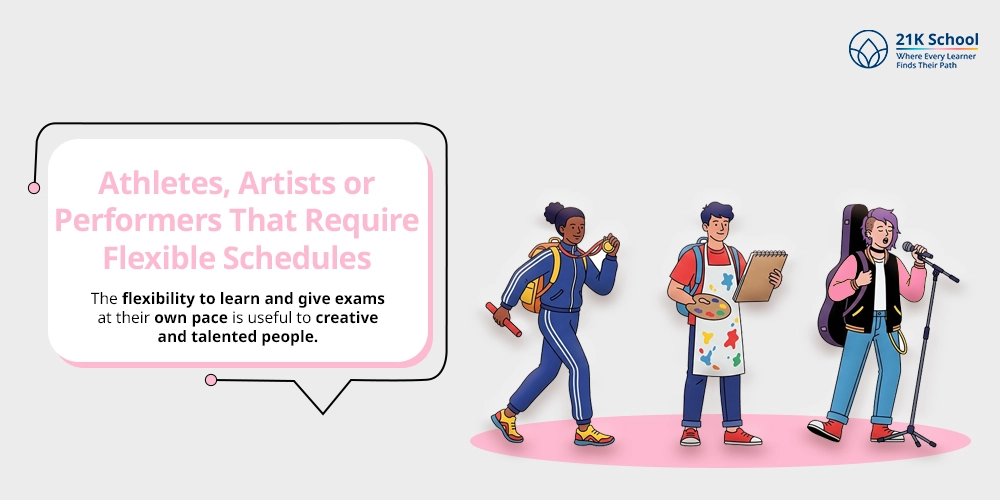
The flexibility to learn and give exams at their own pace is useful to creative and talented people. These future medalists may need time to train, perform or compete.
5. Parents seeking Homeschooling Solutions
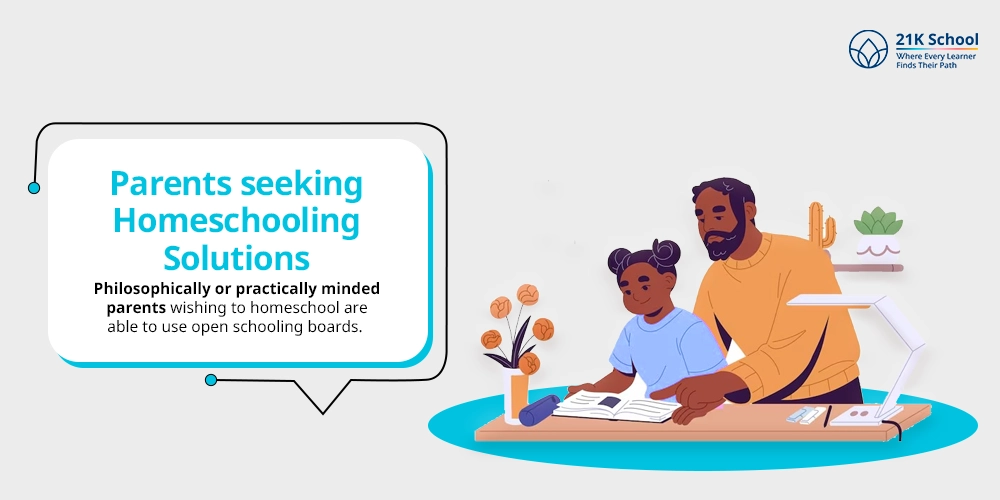
Philosophically or practically minded parents wishing to homeschool are able to use open schooling boards. With its help they offer their children a structured, recognized plan of education.
Factors to Put into Consideration when Joining an Open School
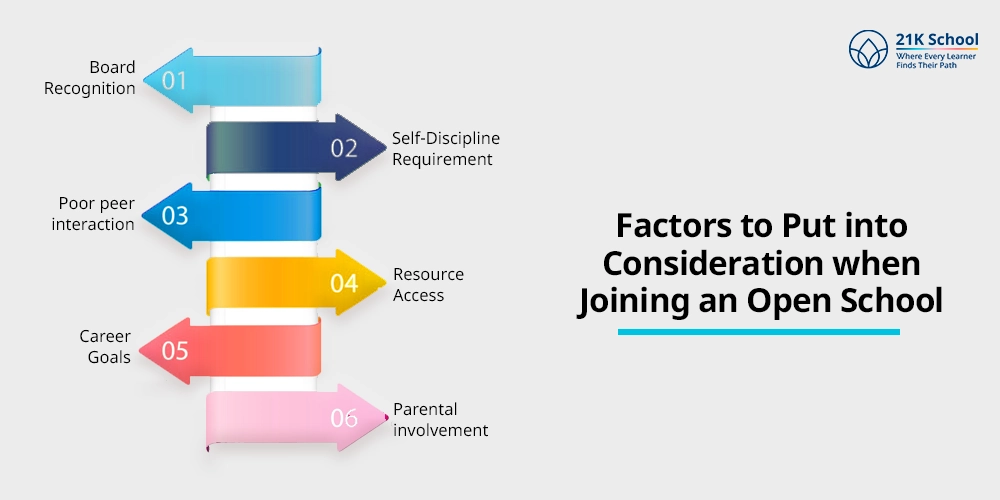
Although open schooling is a good choice there are drawbacks to this type of schooling as well. These are some of the main considerations:
- Board Recognition: Make sure that the open school is acknowledged by national or state board of education (e.g., NIOS, COBSE).
- Self-Discipline Requirement: Students must have motivation and time management because they will not have classes every day.
- Poor peer interaction: Open schooling has less interaction with peers and extracurricular activities as compared to normal schools.
- Resource Access: Ensure that the school has good quality of study material and support (on or off line).
- Career Goals: Ensure that your choice of university, course, job accepts open board certifications.
- Parental involvement: Most times, even with younger children, parents will have to be actively involved in helping their child learn.
Advantages of Open Schooling in India
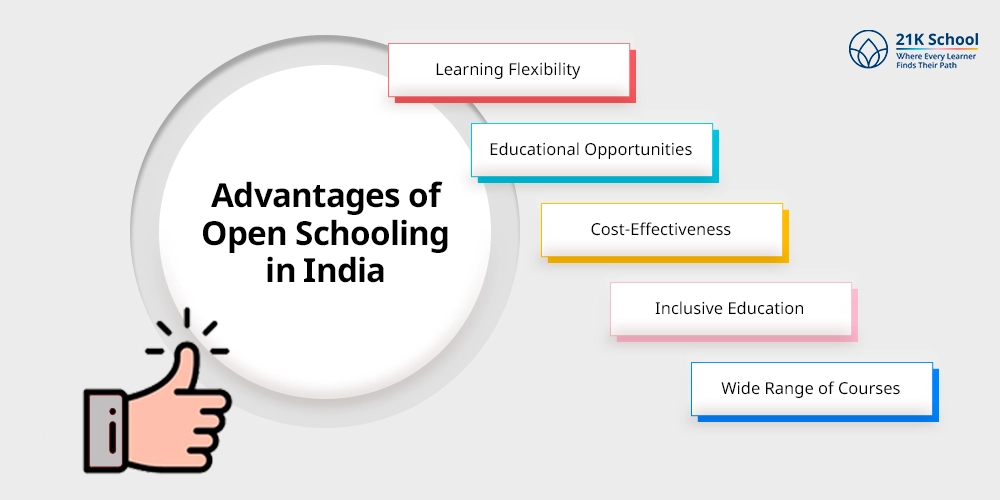
Open schooling creates opportunities to numerous learners who would have been otherwise neglected in the conventional schooling system. These are some of its outstanding benefits:
1. Learning Flexibility
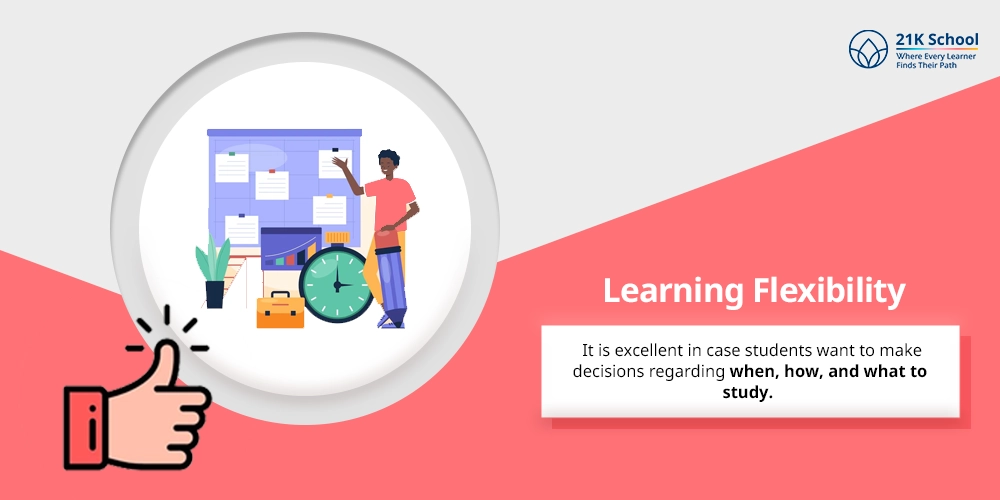
Open schooling provides flexibility of learning to the greatest extent. It is excellent in case students want to make decisions regarding when, how, and what to study.
The on-demand exam system gives a chance to the students to study at their pace. And there is no rigid age barrier to join the course so aged or non-traditional students can avail the chance to study.
We all know that the future of schooling is flexible and remote . So, why not opt for open schools as well.
2. Educational Opportunities
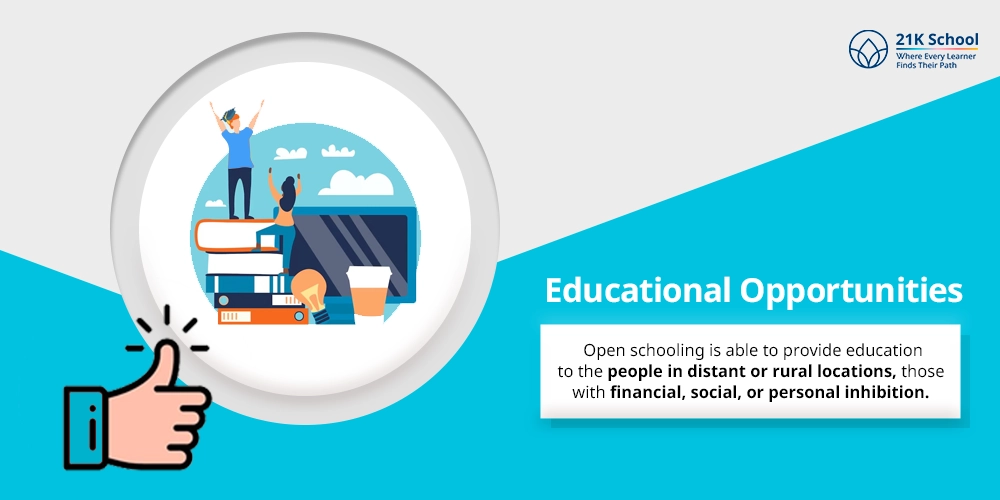
Open schooling is able to provide education to the people in distant or rural locations, those with financial, social, or personal inhibition. It gives a crucial alternative to other students who are unable to access conventional schools.
This is mostly because of distance, disability, or other aspects. So that they are able to access school and practice their academic ambitions without geographical or money issues.
3. Cost-Effectiveness
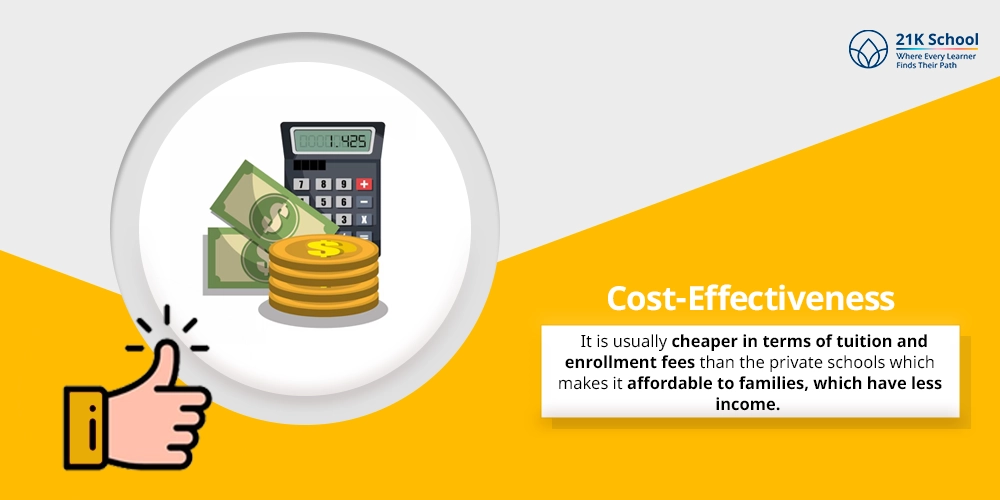
Affordability is among the major advantages of open schooling. It is usually cheaper in terms of tuition and enrollment fees than the private schools which makes it affordable to families, which have less income.
Also, most of the open schooling boards provide examinations and books at government rates to students belonging to weaker sections. Thus taking the burden of the financial part again.
Read more and find how expensive education can change into affordable online education .
4. Inclusive Education
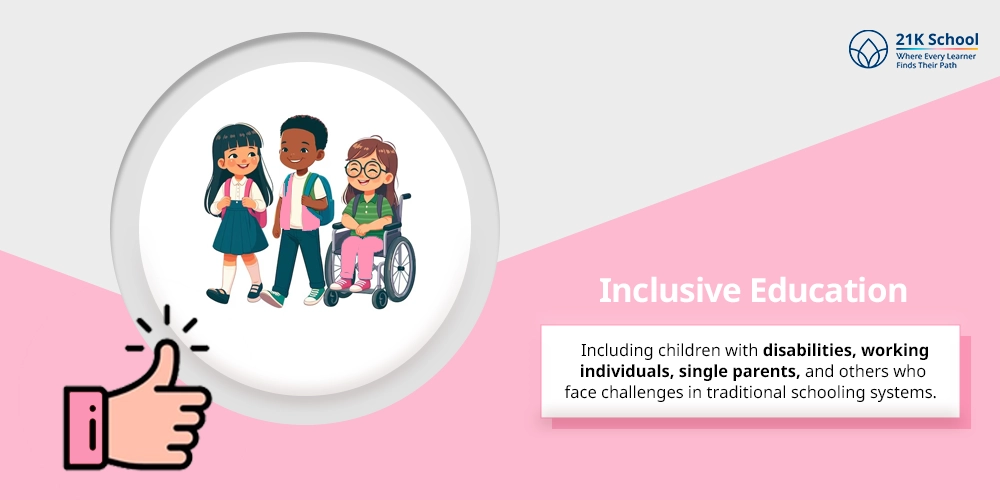
Open schooling inherently focuses on inclusive education , catering to a wide range of learners. Including children with disabilities, working individuals, single parents, and others who face challenges in traditional schooling systems.
It ensures no discrimination based on academic history, age, or socio-economic status, allowing anyone to access education without barriers.
5. Wide Range of Courses
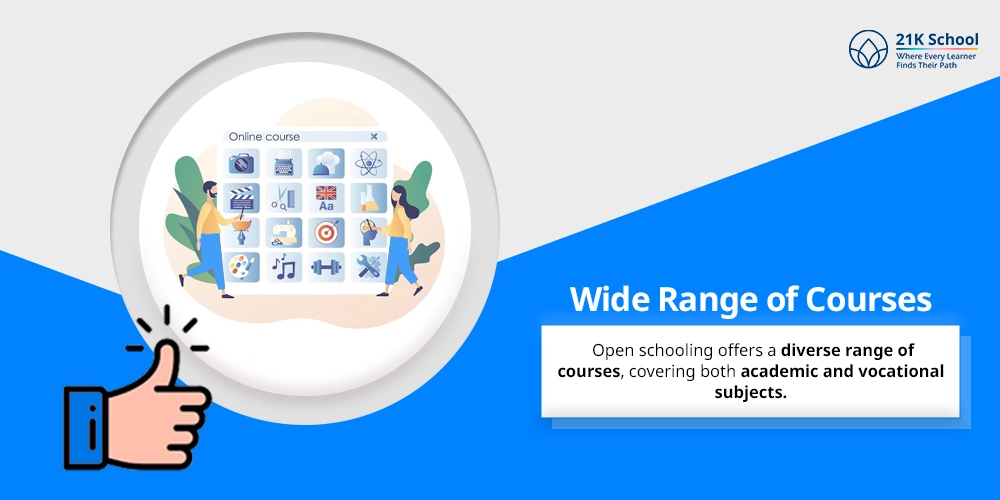
Open schooling offers a diverse range of courses, covering both academic and vocational subjects. Students can choose from a variety of languages, electives, and specialized vocational programs.
Further enabling them to tailor their education to their interests and career goals. This flexibility ensures that learners can pursue their passions while preparing for the workforce.
And not just students, there are resources for professional development of teachers as well.
Challenges of Open Schooling
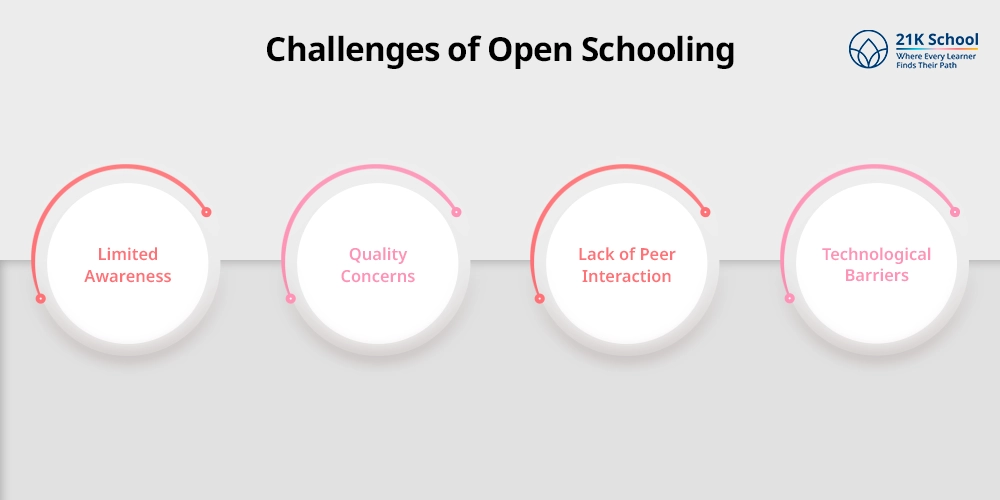
While open schooling provides flexibility and access, it also faces several challenges that can impact its effectiveness and perception.
1. Limited Awareness
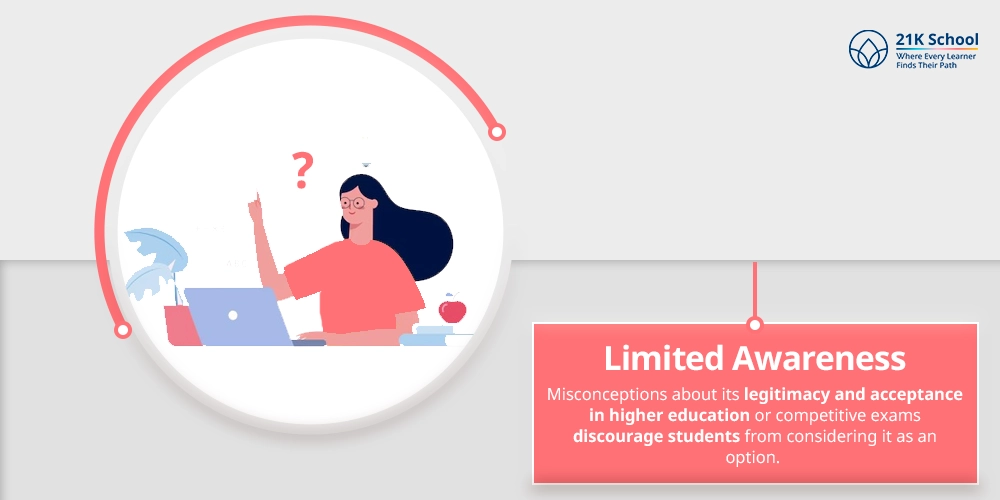
Despite its benefits, many parents and students are unaware of open schooling as a valid and recognized educational pathway. Misconceptions about its legitimacy and acceptance in higher education or competitive exams discourage students from considering it as an option.
This lack of awareness can limit the growth and acceptance of open schooling in mainstream education.
2. Quality Concerns
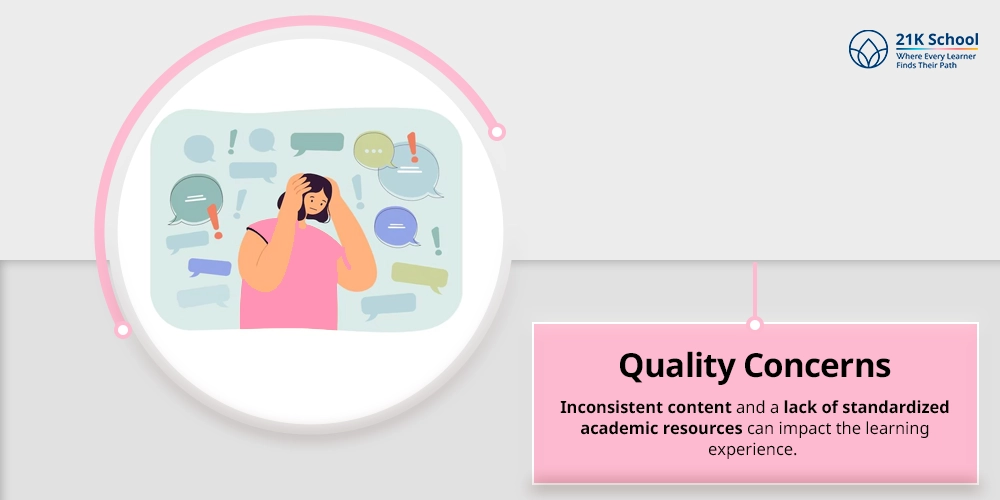
The quality of study materials in open schooling can vary, especially in state-run open boards or some unregulated private institutions. Inconsistent content and a lack of standardized academic resources can impact the learning experience.
Additionally, the absence of trained mentors and proper academic support in some programs can hinder the effectiveness of self-learning. Thus, leaving students without sufficient guidance.
3. Lack of Peer Interaction
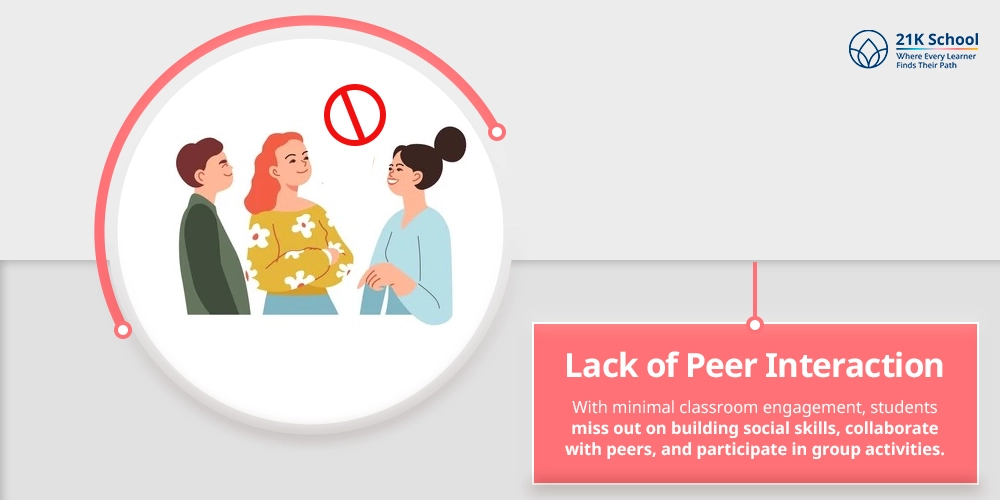
Open schooling often lacks the social and collaborative learning students get from regular schools. With minimal classroom engagement, students miss out on building social skills, collaborate with peers, and participate in group activities.
Furthermore, the absence of sports, and extra-curricular activities typically found in regular schools may hinder the overall development of students.
4. Technological Barriers
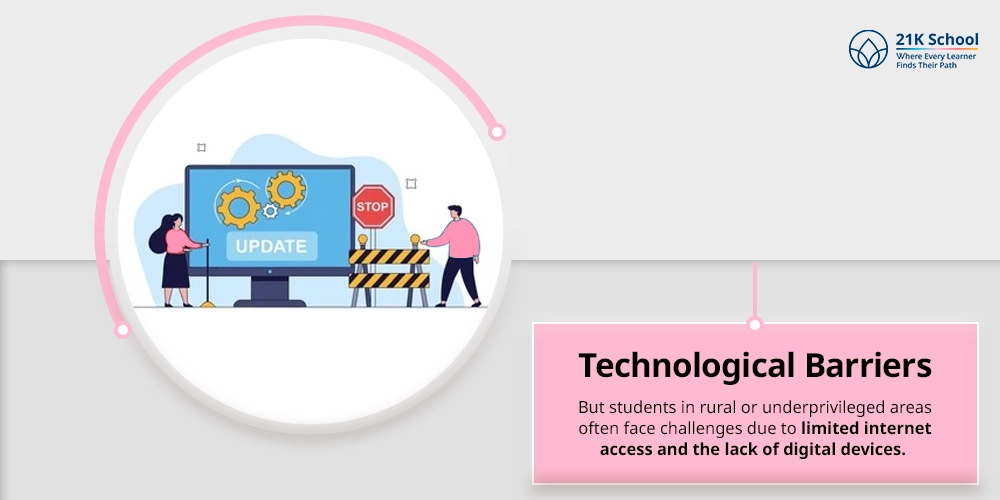
Many open schooling programs rely heavily on digital platforms. But students in rural or underprivileged areas often face challenges due to limited internet access and the lack of digital devices.
These technological barriers can create disparities in access to quality education, leaving students in such areas at a disadvantage.
Here’s how you can render quality over quantity-helping online schools provide quality education .
Future of Open Schooling in India
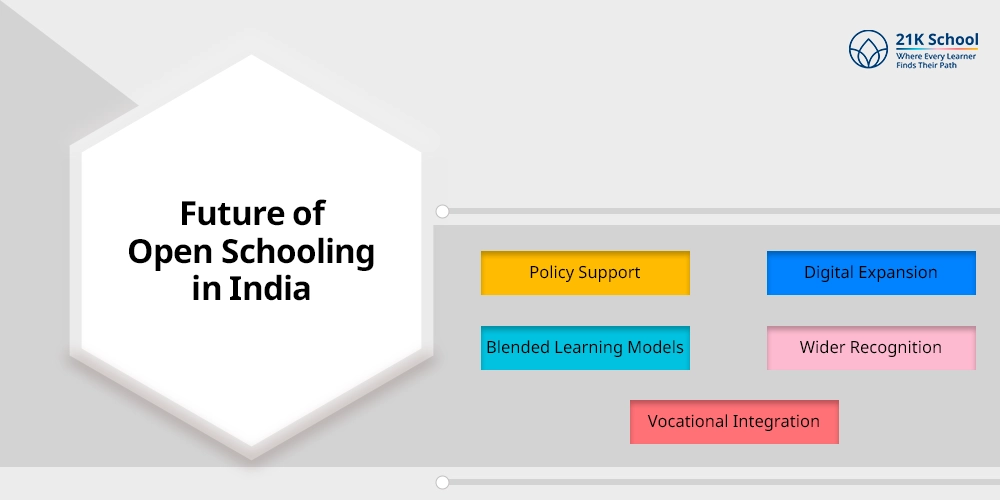
The future of open schooling in India is promising, especially as the country moves toward flexible, inclusive, and tech-driven education models. Key developments include:
1. Policy Support
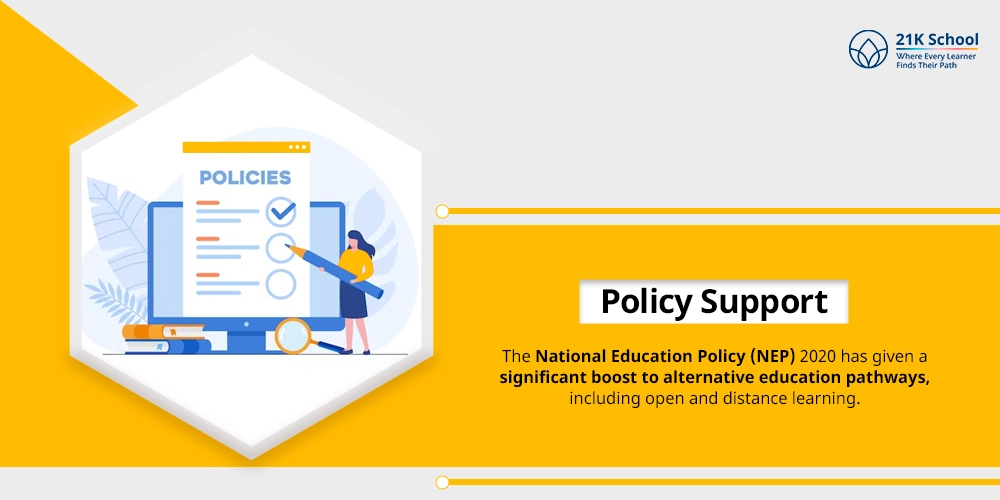
The National Education Policy (NEP) 2020 has given a significant boost to alternative education pathways, including open and distance learning. It emphasizes the need for flexible, inclusive education, making open schooling a more recognized and supported option for students across India.
2. Digital Expansion
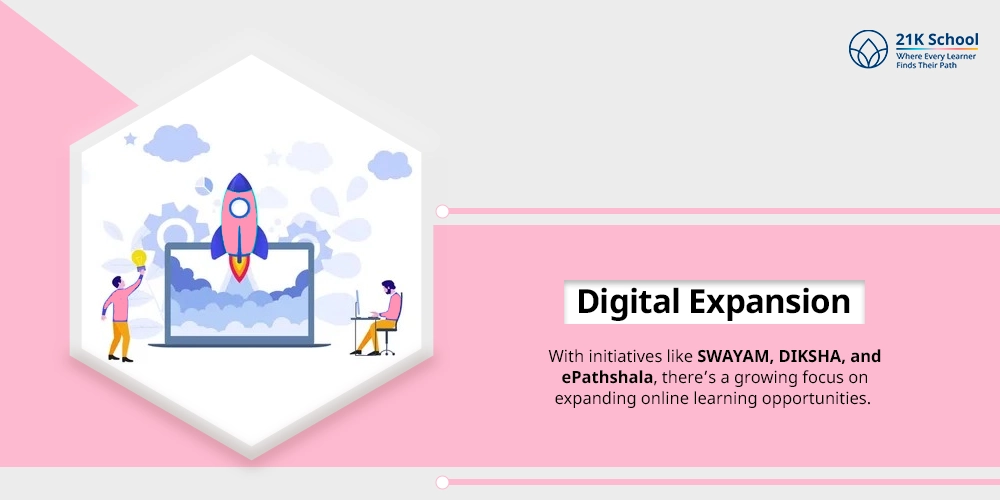
With initiatives like SWAYAM, DIKSHA, and ePathshala, there’s a growing focus on expanding online learning opportunities. These platforms enhance the access and quality of digital resources for open school learners, helping bridge gaps in traditional education.
3. Blended Learning Models
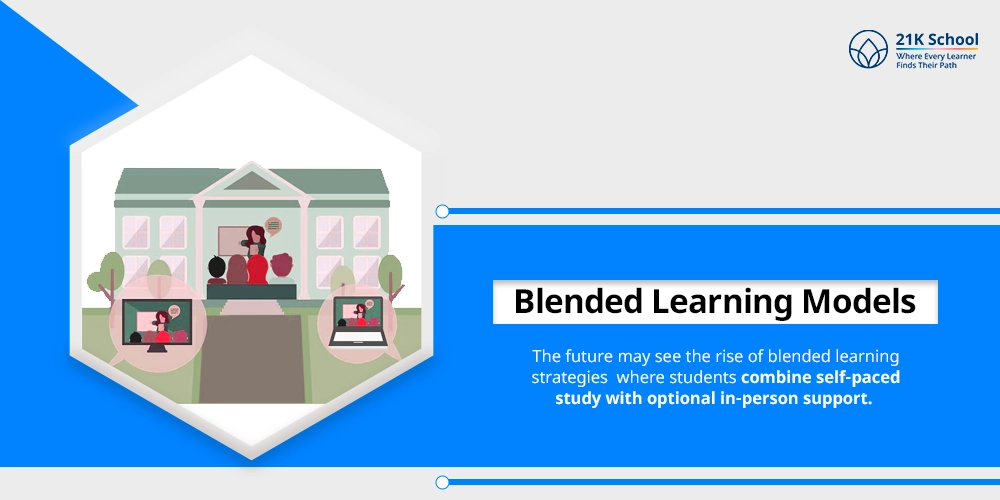
The future may see the rise of blended learning strategies where students combine self-paced study with optional in-person support. This mix can improve learning outcomes, increase engagement, and provide a more holistic education experience.
Therefore, allowing learners to benefit from both independent and guided learning.
4. Wider Recognition
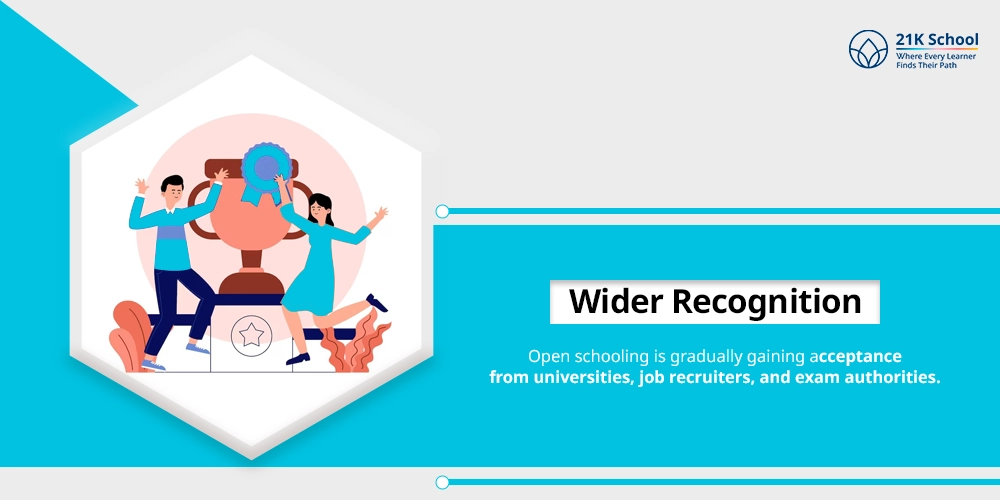
Open schooling is gradually gaining acceptance from universities, job recruiters, and exam authorities. As more institutions recognize the validity of open schooling certificates, it helps normalize this form of education.
Further, ensuring equal opportunities for open school students.
5. Vocational Integration
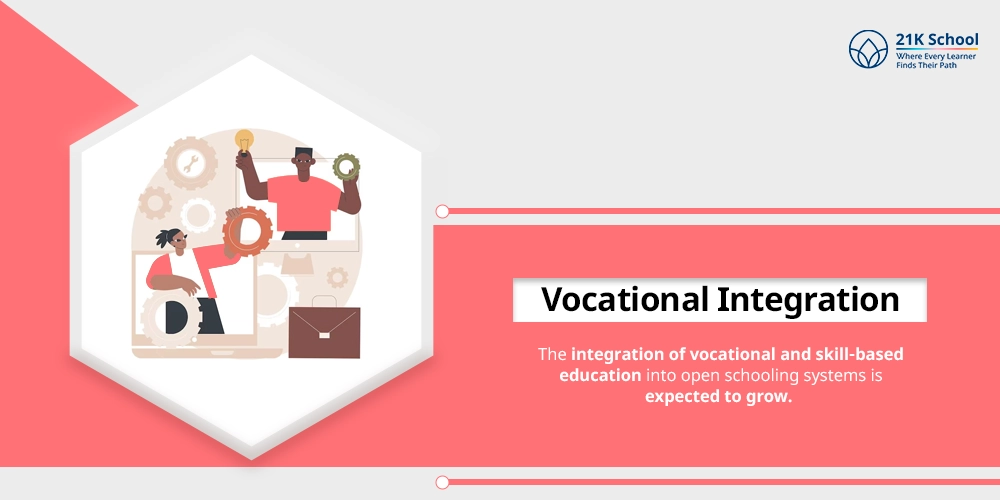
The integration of vocational and skill-based education into open schooling systems is expected to grow. This focus on practical, hands-on education will help improve the employability of open school learners.
These will be providing them with essential skills for the workforce and aligning education with market needs.
To Conclude
Open schooling in India has become a transformative tool for learners who require a non-traditional educational path. With options like NIOS and state open boards, students from dropouts to gifted performers, can access quality education tailored to their needs.
Not just that, for open schooling to reach its full potential, awareness must grow. And efforts to improve quality, accessibility, and integration with mainstream opportunities must continue. With the right support, open schooling can be a powerful equalizer in India’s education system.
